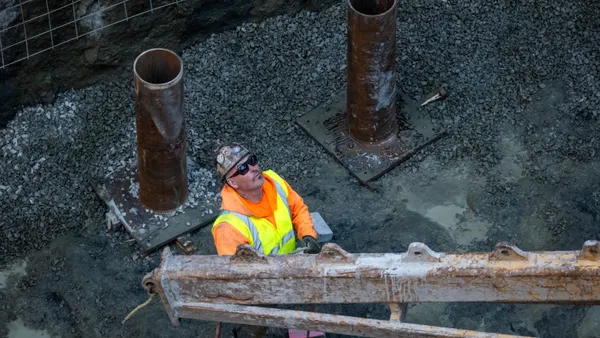Dive Brief:
- Alabama Gov. Kay Ivey signed a bill into law Friday allocating $1.3 billion toward building at least two new prisons in the state, according to the Montgomery Advertiser.
- The bulk of the funds, $785 million, will be borrowed by the state. The rest of the money comes from a variety of sources: $400 million from COVID-19 relief funds toward state and local government recovery, and $135 million from general fund money.
- The proposed prisons are in Elmore and Escambia counties, and with these, Alabama will close several others, according to the Advertiser. Each new prison will hold about 4,000 people, making them much larger than any current Alabama prison. Additionally, the legislation paves the way for a 1,000-inmate women's prison once the men's facilities are 60% complete.
Dive Insight:
At the crux of the issue is widespread violence in Alabama prisons. On Dec. 9, 2020, the Department of Justice filed a lawsuit against the state of Alabama for what it called "unconstitutional conditions" in the prison system, such as gang violence and dangerous assaults.
The state has come under scrutiny for the proposed use of American Rescue Plan funding to build the prisons. Rep. Jerrold Nadler (D-NY), chairman of the House Judiciary Committee, sent a letter to Treasury Secretary Janet Yellen urging her to stop the funding from going through, calling it a "misuse of ARP funding" in his letter.
"Directing funding meant to protect our citizens from a pandemic to fuel mass incarceration is, in direct contravention of the intended purposes of the ARP legislation and will particularly harm communities of color who are already disproportionately impacted by over-incarceration and this public health crisis," wrote Nadler in his letter.
Ivey has also addressed the criticism surrounding this decision, and pointed to the fact that the American Rescue Plan was written to account for a state's lost revenue, according to the Associated Press.
"The fact is, the American Rescue Plan Act allows these funds to be used for lost revenue and sending a letter in the last hour will not change the way the law is written," Ivey said, according to the AP.
The use of ARP funds has varied depending on the entities involved. School districts reported that they were hesitant to use ARP funding on new renovations or construction, citing the 2024 spending deadline as an obstacle.
In May, the Associated General Contractors of America (AGC) released guidance on what types of structures can and can't be built, predicated upon the Treasury Department's own interim final rule (IFR).
The AGC identified that any form of lost revenue, whether it be from sales tax, gas tax or other revenue streams, can be remedied with the funds. Some mentioned projects include affordable housing and support for prevention, mitigation or other services in congregate living facilities, such as nursing homes, group living facilities, and specifically, incarceration facilities.















